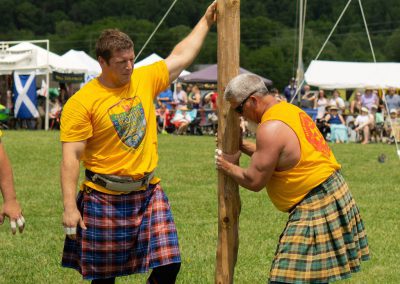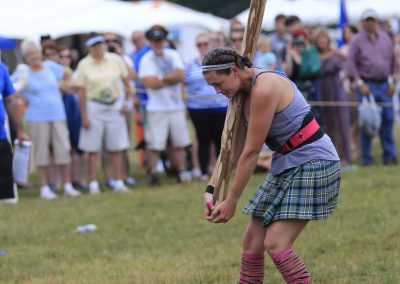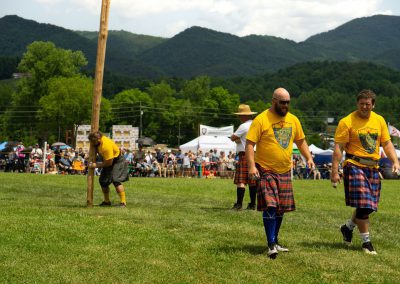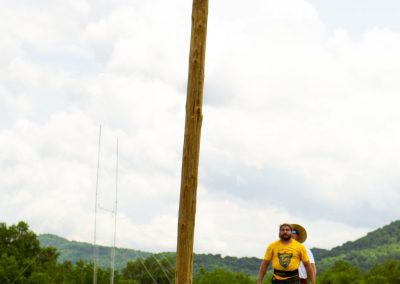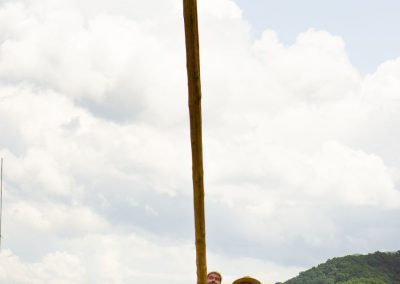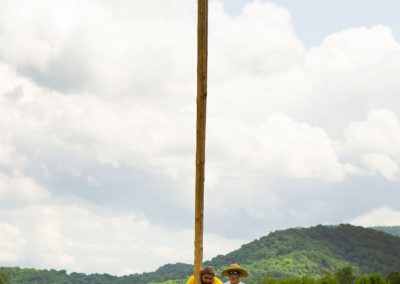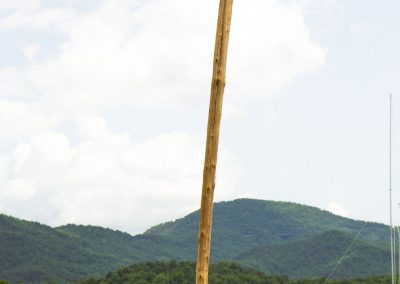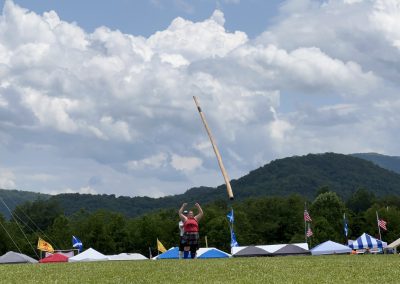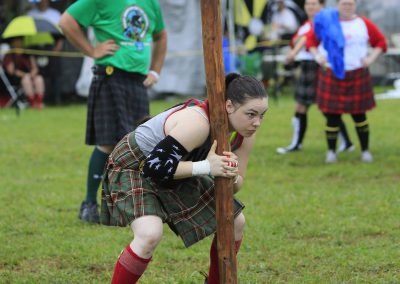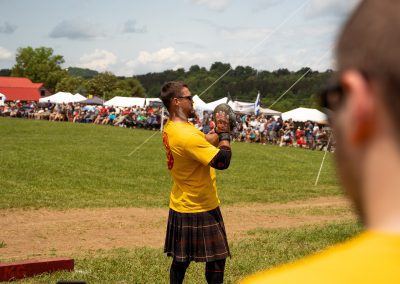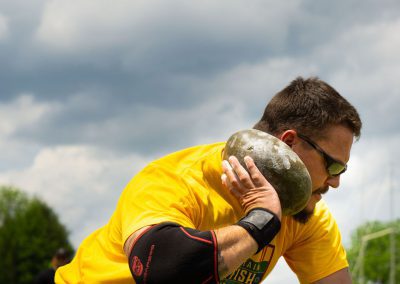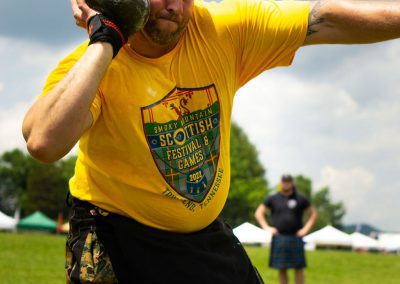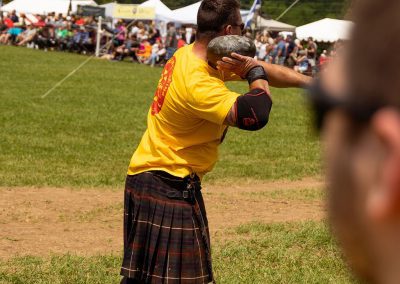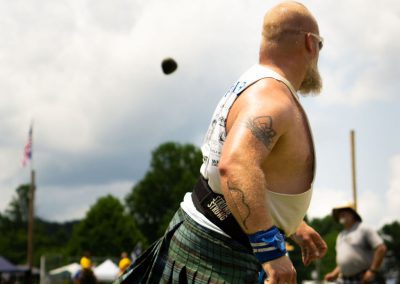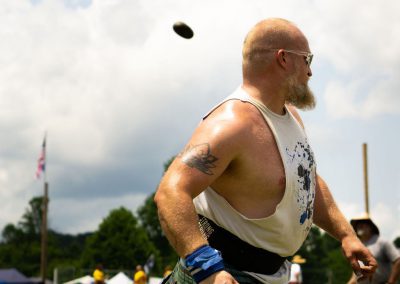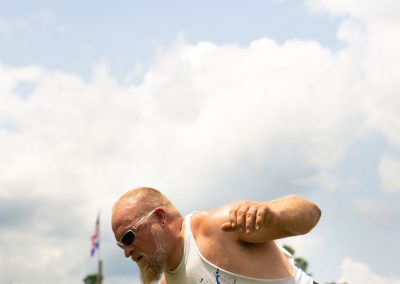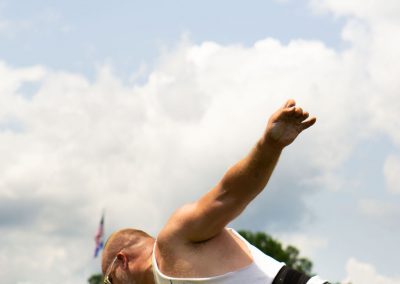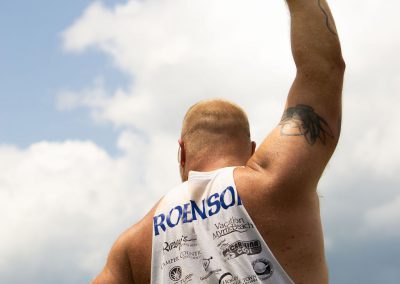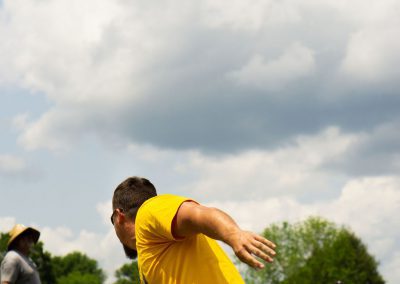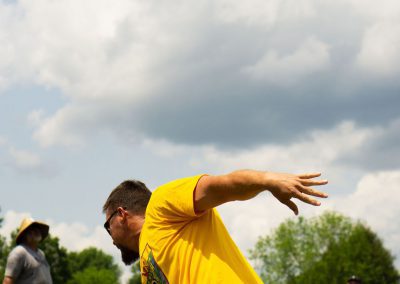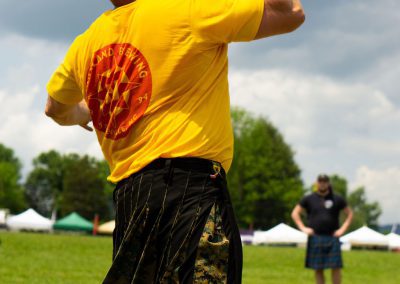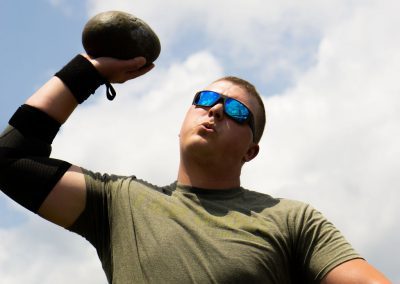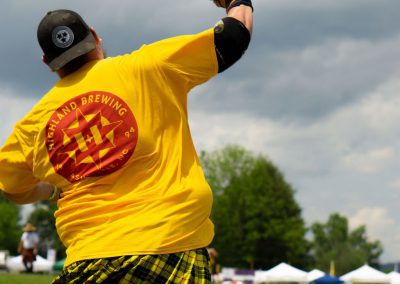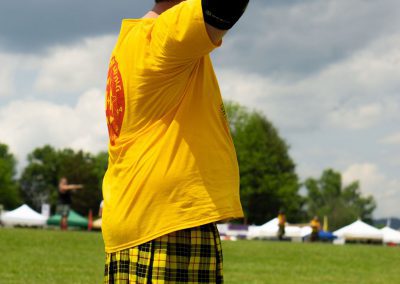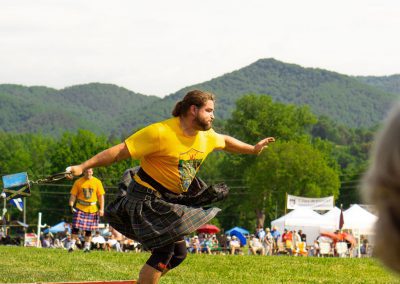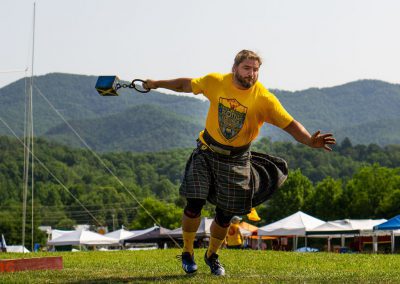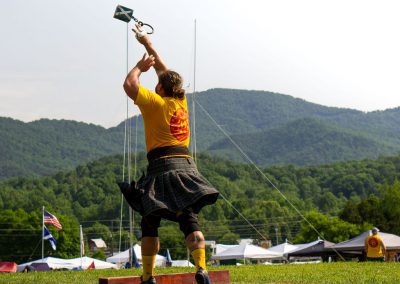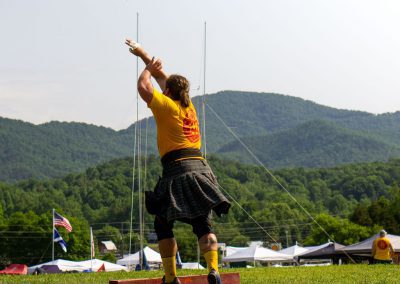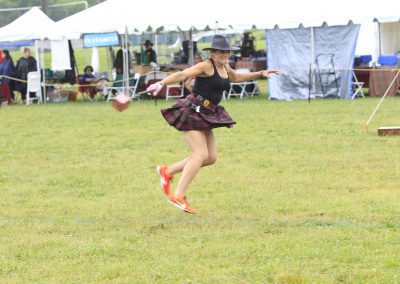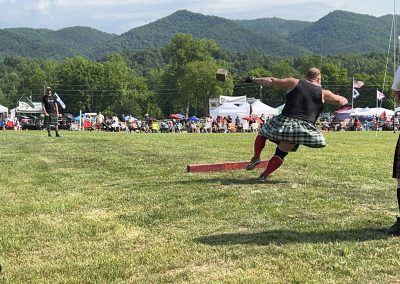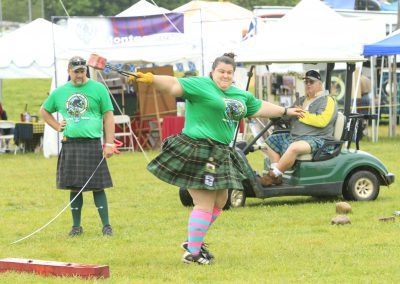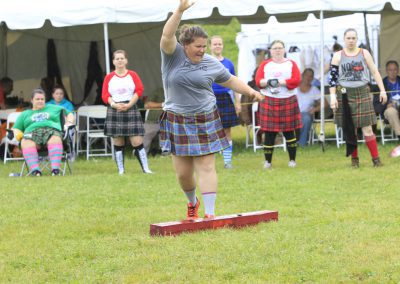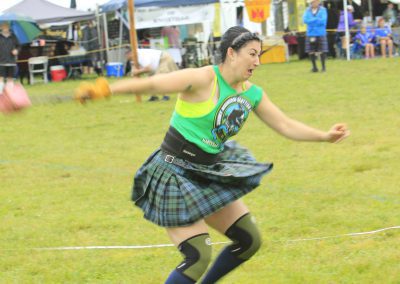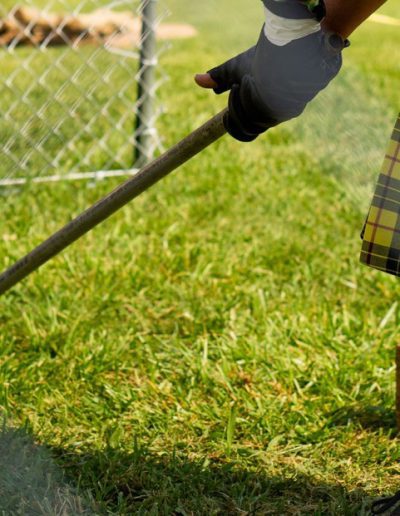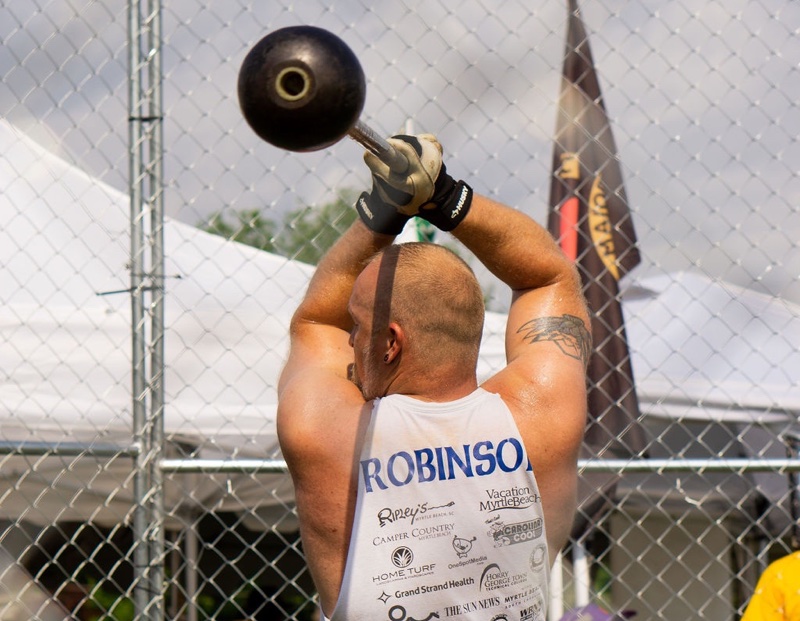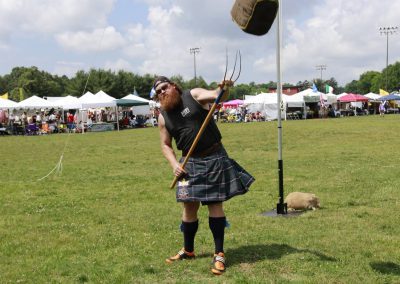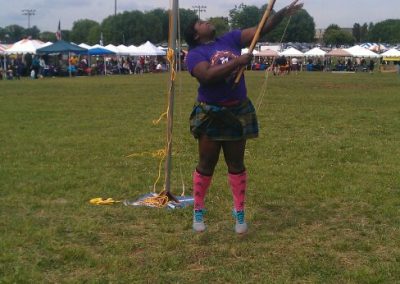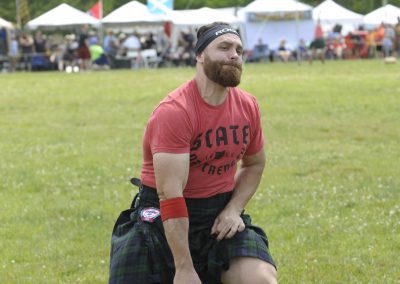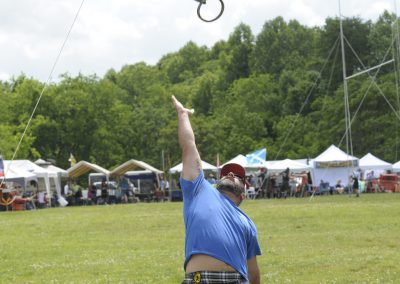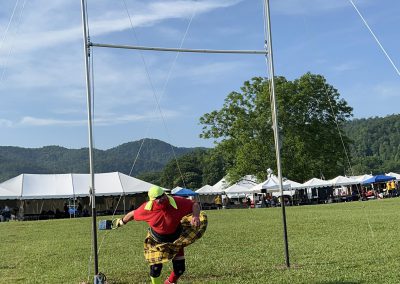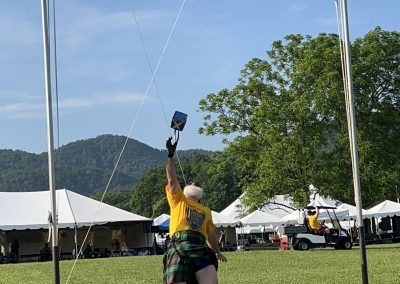Scottish heavy athletics owe their roots to the Highland warriors who would keep in shape between battles by competing amongst themselves with everyday implements. A stone, a blacksmith’s hammer, a tree trunk (caber) became tools for building strength for battle.
Heavy Athletics
2025 Heavy Athletics registration is open!

Athletic Director Britton Leitch
CONTINUE THE TRADITION WITH TODAY’S WARRIORS!
Many people think that the male and female athletes select the events in which they compete, but heavy throwers must compete in ALL the events offered in a competition, which can vary from seven to nine different throwing events. The competition typically takes all day long to complete with athletes moving from one throwing area to another.
Caber
Open Stone
Braemar Stone
Heavy Weight For Distance
Light Weight For Distance
Heavy Hammer
Light Hammer
Sheaf
WEIGHT FOR HEIGHT OR WEIGHT OVER BAR
Caber
Perhaps the most widely recognized event in the games. Often, this is synonymous with the entire sport, and it serves as the “main event” at most Celtic festivals. The caber is a wooden log that must be lifted and tossed, then points are awarded based on rotation or landing position. There is no standard size for a caber, but there is a rule of thumb that at least half of the competitors must be able to turn it. Most are tapered with the smaller end being shaved down considerably to allow competitors to get a handle on it.
Scoring the caber is a whole thing in and of itself. The short version is that you can score in two methods. The best method is to turn the caber completely over (past 90 degrees) and it lands. The landing position is scored as if on a clock face, with 12:00 being a perfect score. If you do not turn the caber past 90 degrees, you receive a score based on the angle you turned it to. Turns always beat non-turns.
Open Stone
A stone put from a throwing area that measures 4 feet, 6 inches wide by 7 feet, 6 inches long. The stone must be put with one hand and with the stone remaining against the neck throughout the throw until the release. Any throwing style may be used as long as the rules are followed and the style is deemed safe by the judge. You will notice at the higher levels, this begins to look a lot like Olympic shot put. Stone Weights – Men 16-22 lb., Women 8-12 lb.
Braemar Stone
Same as the Open Stone, except the stone is heavier and the competitors must throw from a standing position with no approach allowed. Stone Weights – Men 20-26 lb., Women 13-18 lb.
Heavy Weight For Distance
A metal weight is thrown with one hand from a throwing area that measures 4 feet, 6 inches wide by 9 feet long. The weight can be of various shapes and sizes, including spherical, bullet or box-shaped. The handle can either be attached directly to the weight or attached with a length of chain. Implement Weights – Men 56 lb., Women 28 lb., Masters/Novice 42 lb.
Heavy Hammer
The hammer is a spherical metal head with a long handle of either PVC pipe or rattan attached. Maximum length is 50 in. The hammer must be thrown with the feet in a fixed position, and no approach is allowed. Almost all competitors throw hammers with their back to the field, and release over their shoulder. Heavy Hammer Weights – Men 22 lb., Women 16 lb.
Sheaf
While many dispute the origins of this event, it is a mainstay at most big games. A 16 or 20 lb. burlap bag of hay or twine is tossed with a pitchfork over a bar, or standard. The goal is to toss it the highest. Each competitor gets three attempts at each height. Sheaf Weights – Pros 20 lb., & Amateur 16 or 20 lb., Masters 16 lb., Women 12 lb.


